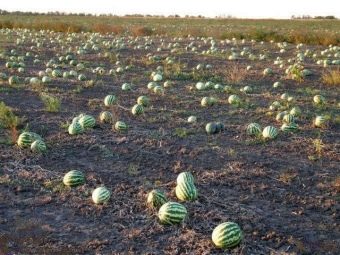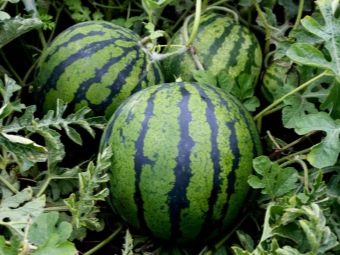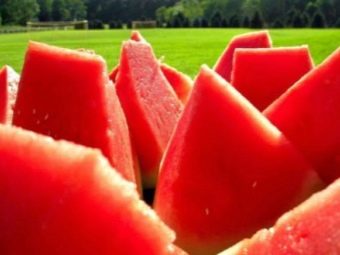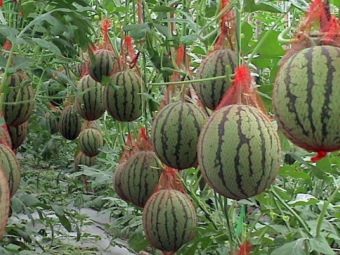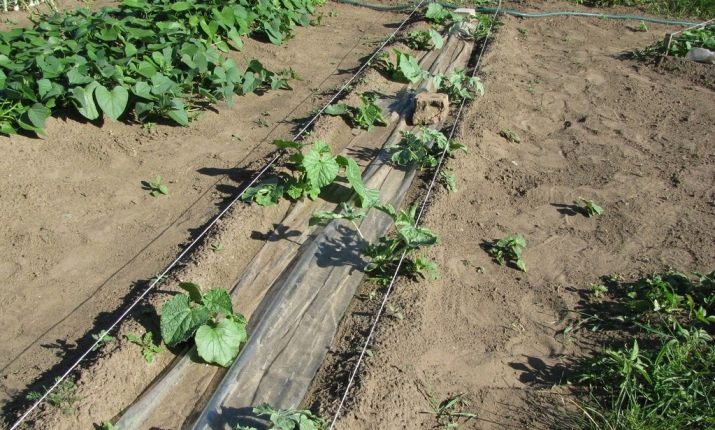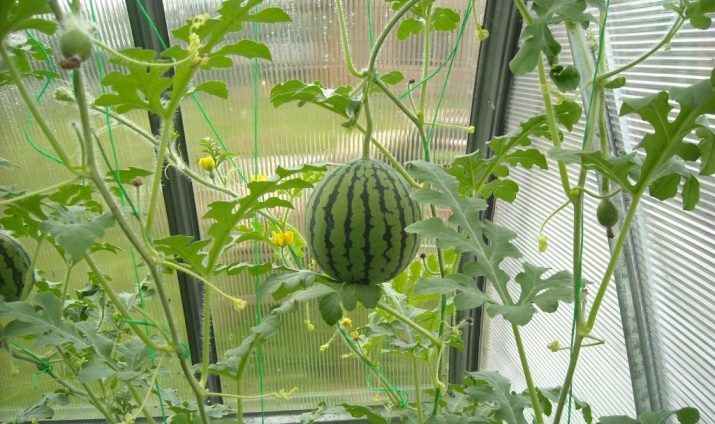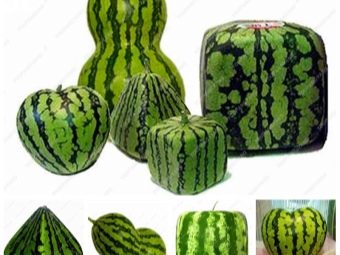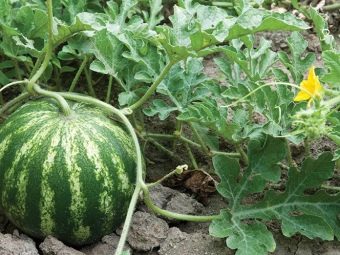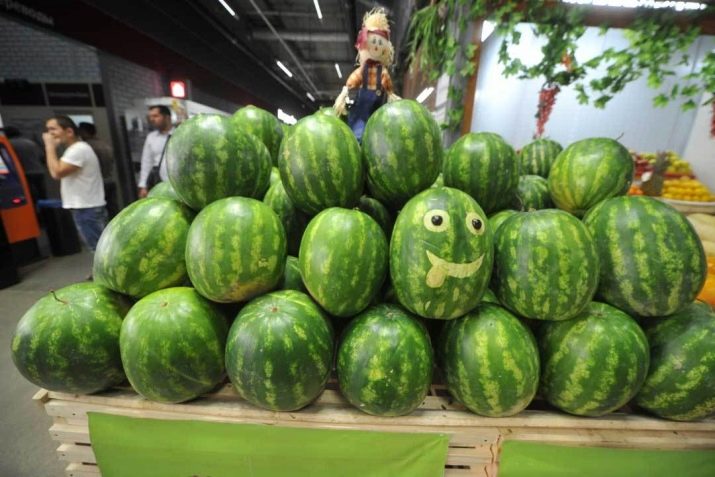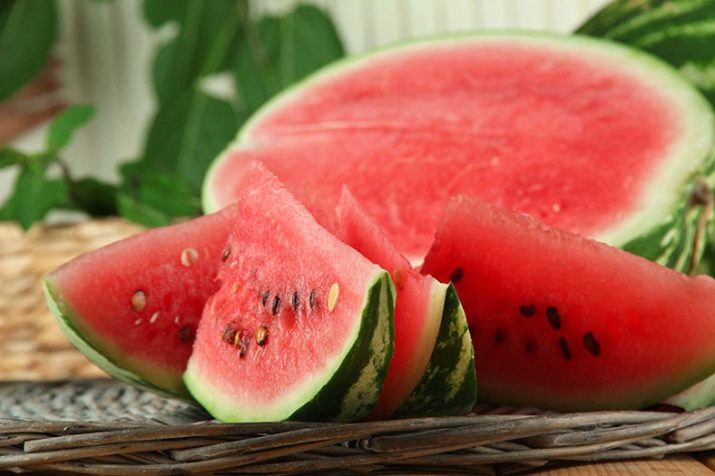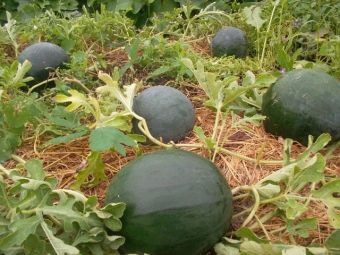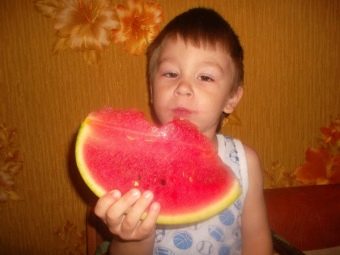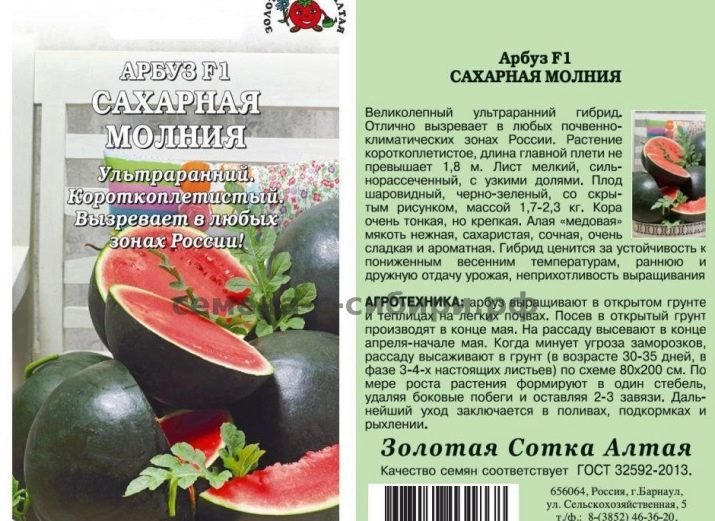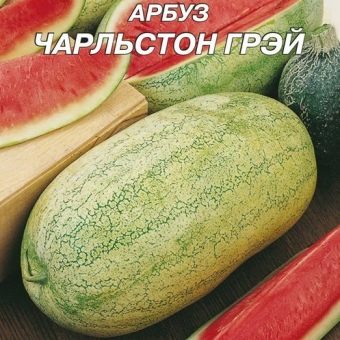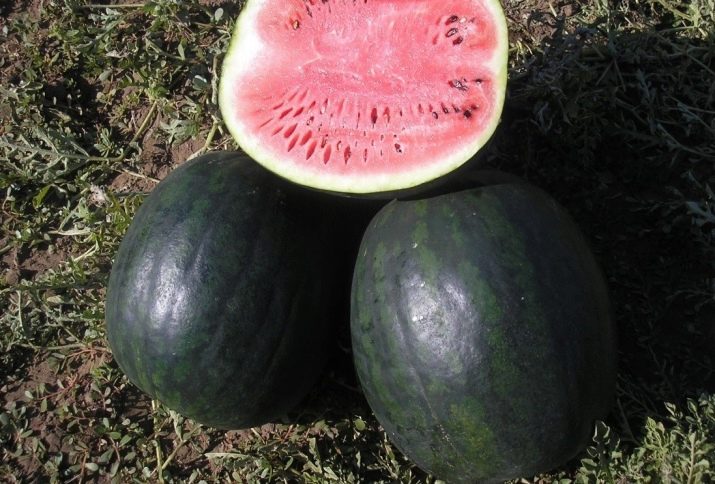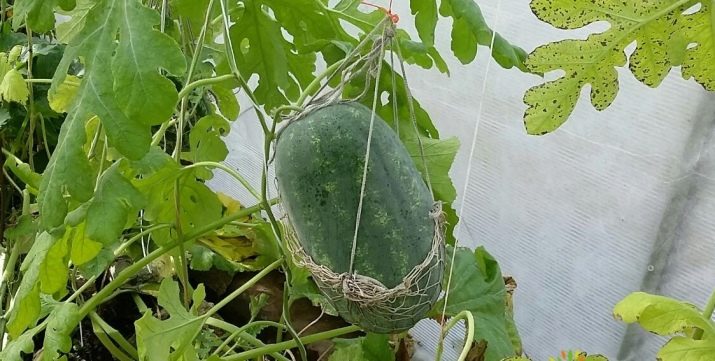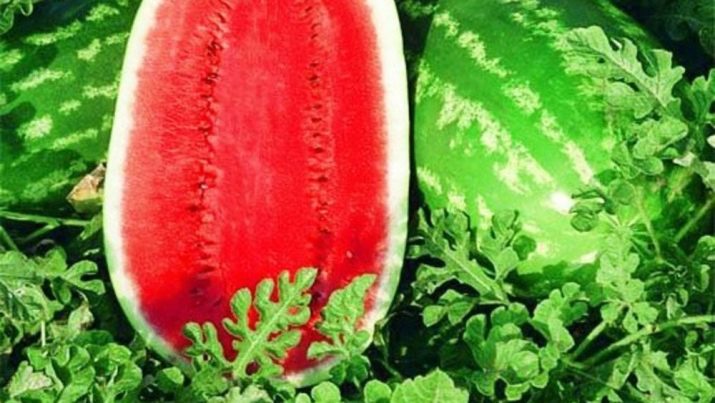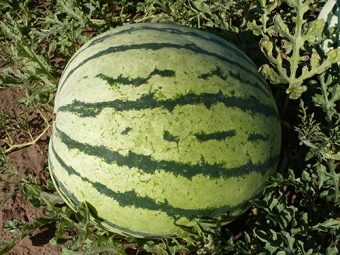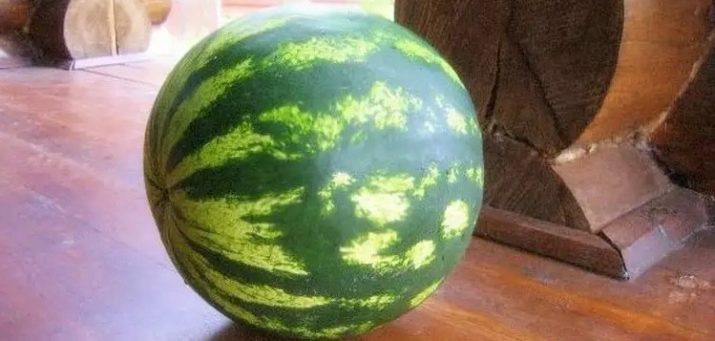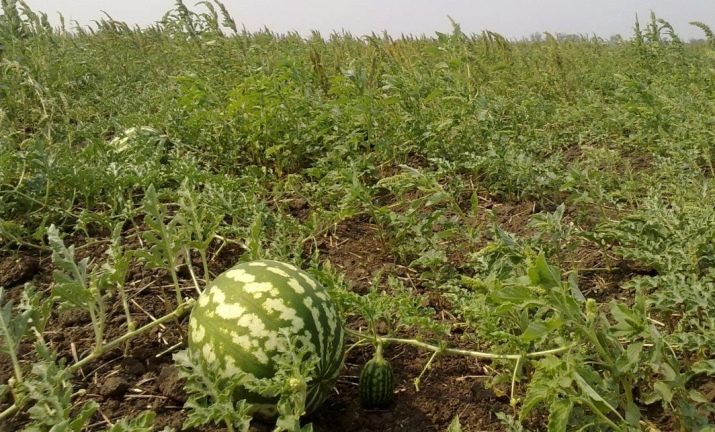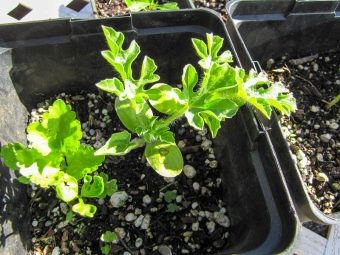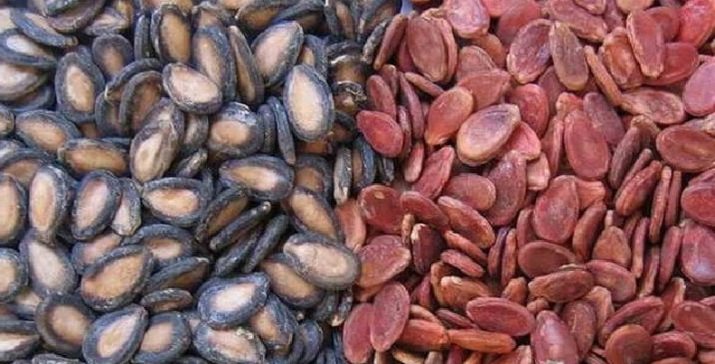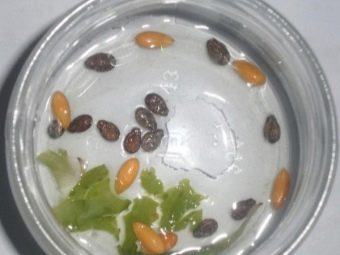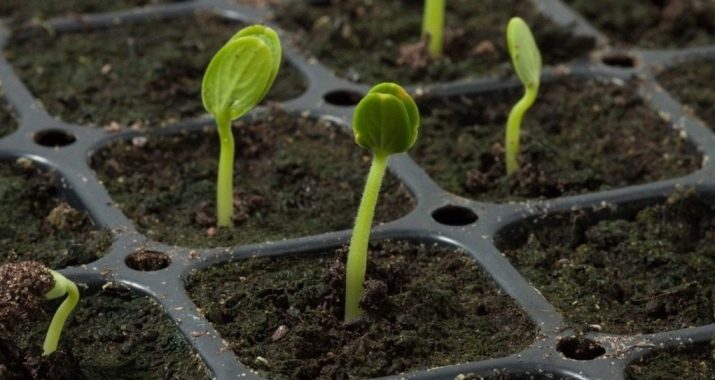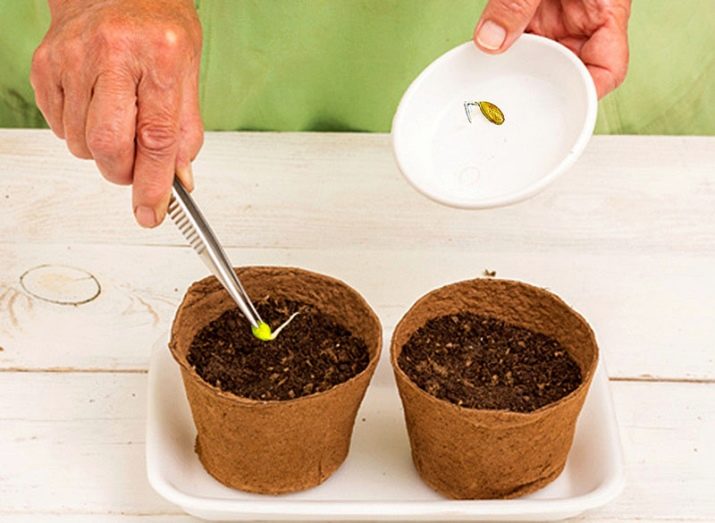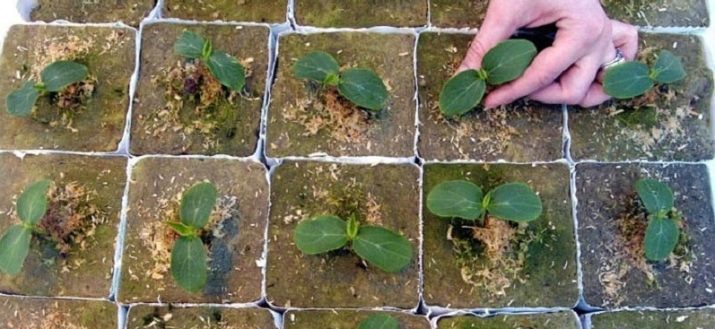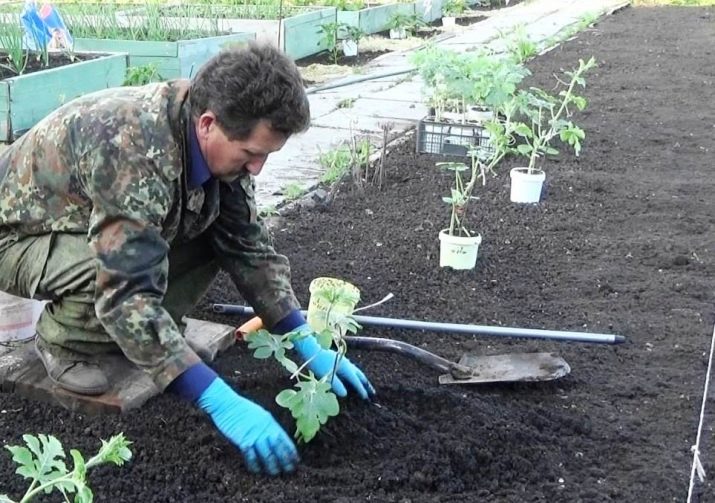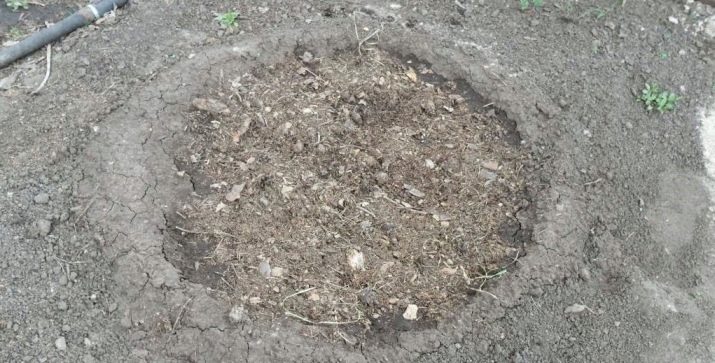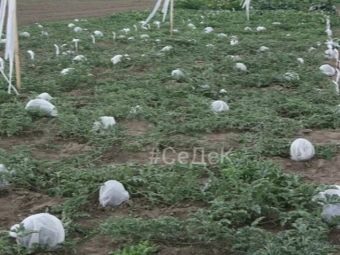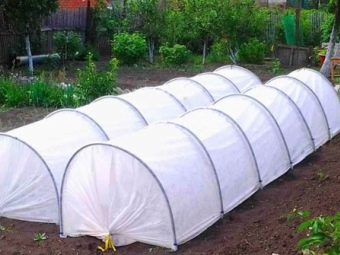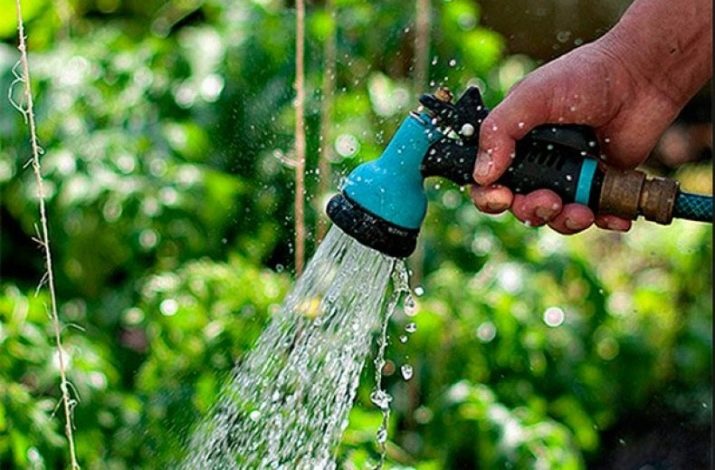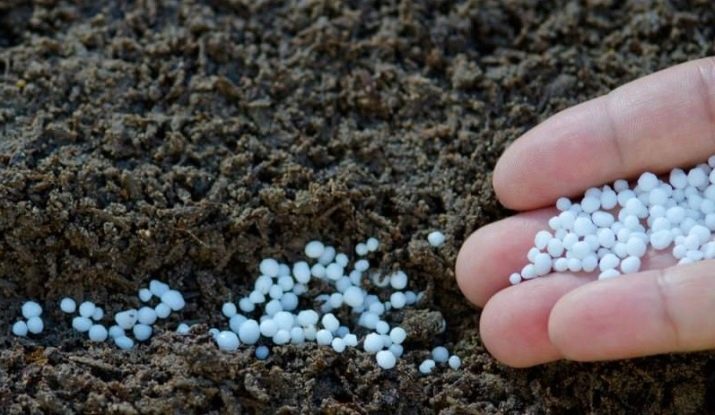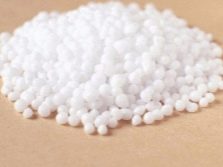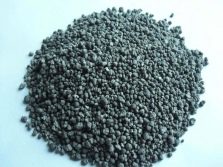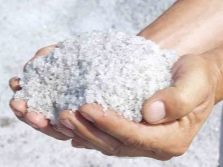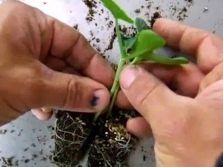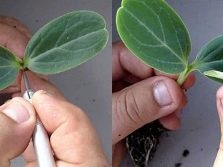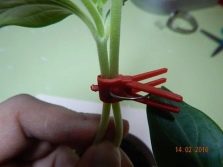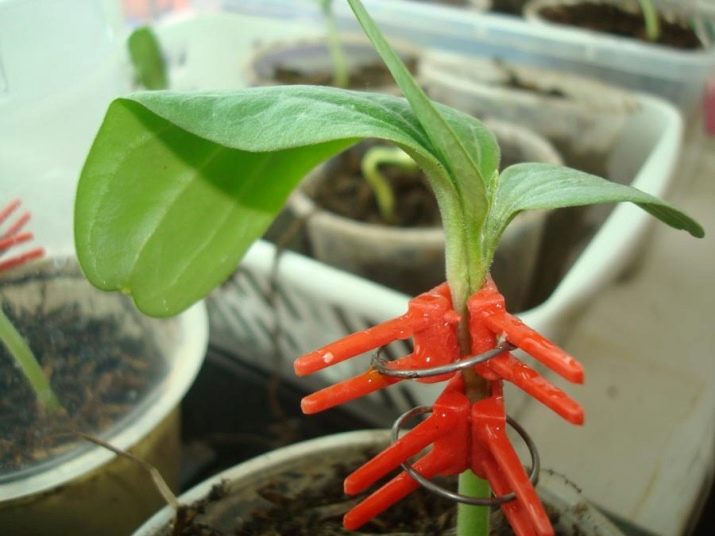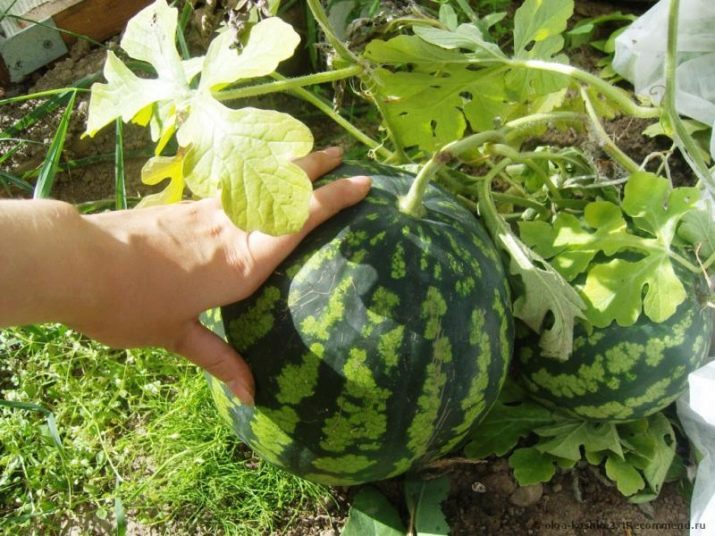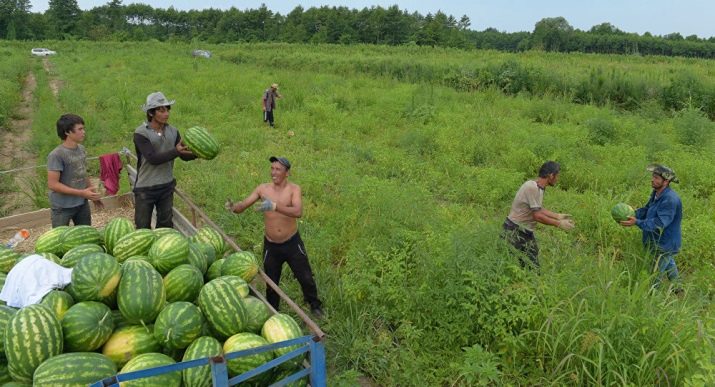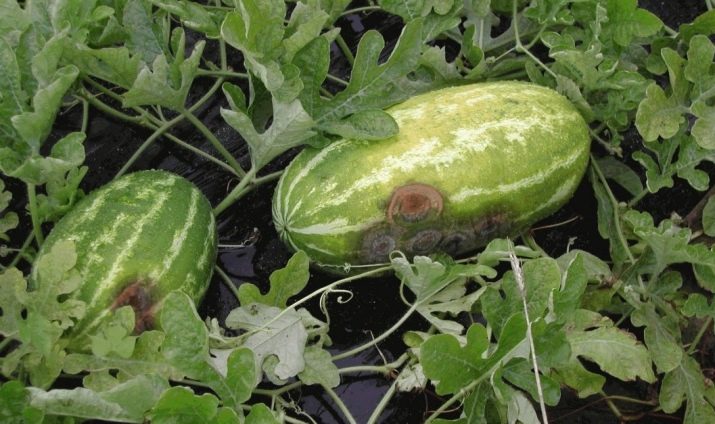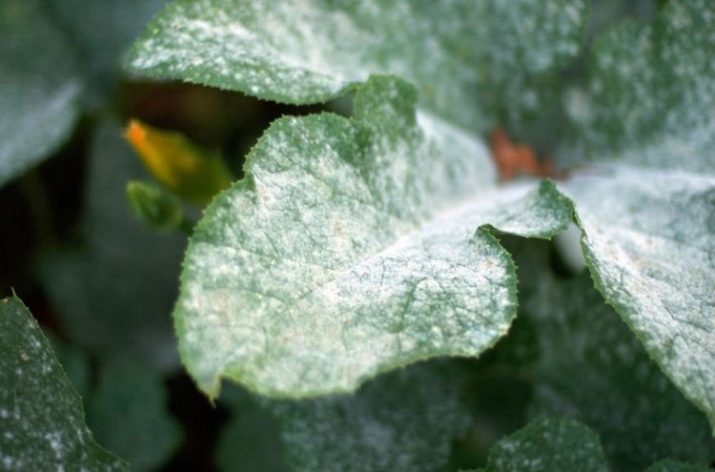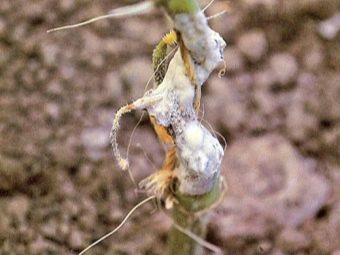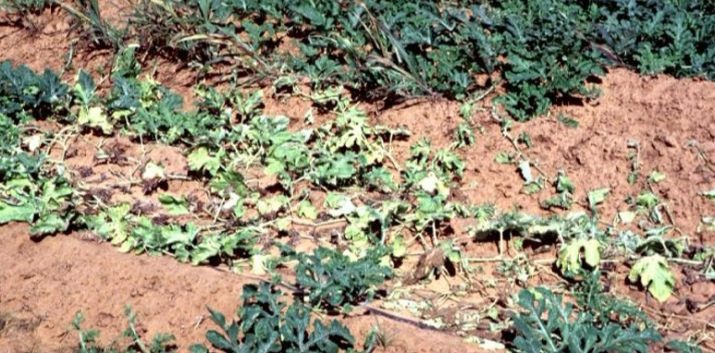What you need to know about growing watermelon in the open field?
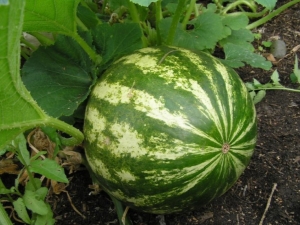
Very often, watermelons in stores and in the markets have questionable taste qualities, delivering a lot of disappointment to customers from the dissonance of expectations and reality. And not always melons meet the requirements of environmental safety, especially if they were purchased on the ruins along the roads, from cars in the yards or in other unauthorized places of trade. The favorite berry can turn out to be simply tasteless - watery and fresh, as well as with a rotten middle or stuffed with nitrates with a characteristic “chemical” tinge in taste and a suspiciously smooth cut. Therefore, many gardeners and gardeners are trying to grow this culture in their area.
In modern melon farming, a variety of watermelon breeding methods are used. They are cultivated in greenhouses, in-depth bio-heating greenhouses, film tunnels and in an open way without the use of protective structures. But it is the berries that grew "in the wild" and not in shelters, and how should be fed with the energy of the sun, get the most delicious, have a sweet, fragrant, melting in the mouth pulp. Find out what you need to know about growing watermelon in the open field to avoid mistakes and vain labor, and what varieties are guaranteed to please a stable crop of delicious berries.
Features of the process in different regions
For a long time, the cultivation of watermelons remained the privilege of the southern regions with a hot climate, but due to the efforts of breeders the situation has changed. Scientists have improved many valuable forms of table watermelon, brought early ripening and hybrid varieties, adapted to different climatic conditions, among which there are hybrids available for growing in any terrain.
Therefore, the Russian south has ceased to be the only place where it is possible to cultivate watermelons. The geography of cultivation of the largest berry expanded to the Urals, the north-western regions - Siberia and Altai, the Moscow region and the regions of the Central Federal District, the Central Chernozem and Volgo-Vyatka regions.
If you are going to do melon growing in a short and sometimes changeable summer with prevailing cloudy days, as in northern Russia, you should not rely on the harvest of large watermelons weighing 10–20 kg each. The fruits simply do not have enough time to fully mature for a short summer season.
Having managed to form thick, strong lashes with flowering shoots, melons will stop growing and developing with the fall of temperature indicators in autumn. After the transition of the average daily temperature through the mark of 13-15 ° C and the reduction of daylight hours to 12-14 hours, they die.
The success of growing watermelons in conditions that are very different from those in their homeland, in which thermophilic plants feel comfortable depends on several factors.
- Knowledge and compliance with the nuances of agricultural engineering. Watermelon, like melon, loves heat. But the seeds, to sprout, enough t 14-16 ° C, while the roots are not enough. To activate root growth, a temperature of at least 23 ° C is needed. And in the phase of bud formation and flowering, the thermometer should stay at 18-20 ° C even at night.
- The correct choice of landing method. Cultivation of melons in the open way in areas with unstable weather and short summers involves the preparation of warm high beds. Under the protection of greenhouses and tunnels, plants also have time to fully ripen, not experiencing stress from the effects of negative temperatures. When using medium-short-growing varieties, it is advisable to resort to a seedling method of cultivating melon crops.
- Competent selection of watermelon varieties taking into account the climatic features of a particular locality and the experience of a farmer.
Variety and place selection
Today's variety variety of popular melon culture has over 200 items. When choosing a variety are guided by several criteria.
Origin
To make it easier to navigate in a variety of forms, they were systematized into 10 groups in accordance with the geographical feature, highlighting:
- Russian;
- Western European;
- small, middle and east asian;
- Transcaucasian;
- Far East;
- American;
- Indian;
- Afghan group.
In our latitudes, amateur plant growers usually cultivate varieties that are combined into a Russian, sometimes into a Central Asian or Transcaucasian group. The advantage of these forms of watermelon is high environmental sustainability, characterized by the ability to withstand the effects of environmental stress factors, while maintaining yield.
Many experienced growers prefer to deal with imported hybrids, which is understandable. After all, many foreign breeders in priority improvement of external signs and taste of the fruit. The main advantages of foreign hybrid varieties are high marketability and resistance to infections. Their disadvantage is increased requirements for the diet, so care for them has to be much more careful than domestic ones.
Therefore, those who have just begun to master the wisdom of melon growing, it is better to abandon such options in favor of our F1 varieties.
This will help avoid potential problems in growing and wasting money on the purchase of expensive seed from the collection of overseas hybrids.
Vegetation period
In areas of the nonchernozem zone with a temperate cool climate, the best productivity is shown by the cultivation of fast and ultra-ripe varieties with an early ripening period (up to 80 days).
It is important to remember that there is no point in acquiring large-fruited varieties, since in such conditions they do not have time to mature.
In regions where summer pleases with a large number of warm sunny days, one can safely deal with medium or late ripening varieties or hybrids with a maturity of 80-95 days.
Cold resistance and drought resistance
For cultivation in Siberia or the middle lane requires that the variety was resistant to negative temperatures and withstand return frosts. Accordingly, when watermelons are cultivated in the Central Black Earth region, especially in the southeastern part of the region, where the climate is drier than in the west, the ability of the variety to tolerate droughts becomes crucial.
Sugar content
The representatives of early ripening varieties have a higher sugar content compared to the varieties of the middle and late growing season.
Popular varieties
The following collection presents the most popular varieties of watermelon table for cultivation in the open field.
Among them are both classic varieties that have repeatedly proven their viability in practice, as well as several new ones that have already earned the trust of melon growers.
- "Siberian". The interest of summer residents to this ultra-early variety is due to resistance to weather cataclysms, unpretentiousness, excellent immunity and very high taste. Fruits with an intense red tender flesh under a thin skin have an unusually sweet taste and can compete with Astrakhan watermelons.
- "Delicious F1". One of the new high-yielding hybrids of wide elliptic shape with medium greenish, dissected leaf plates, thin skin and pulp of rich scarlet color of medium dense consistency. Pumpkin with narrow stripes, painted much darker than the light green background. Fruits weigh an average of 3.5-4 kg. Productivity - up to 5 kg / m2. With poor transportability, the variety has a high drought resistance.
- Sugar Lightning F1. Ultra early cold-resistant form, recommended for cultivation in areas of the middle band. Taste is above all praise and fully consistent with the name of the variety. Fruits with aromatic scarlet pulp will delight sugary-sweet honey flavor. The color is uniform, thick green color without a characteristic striped pattern.Leaf blades are miniature, strongly dissected. The ripening period is 65 days from germination to the first fruit harvest.
- Charleston Gray. One of the original varieties with oblong oblong-cylindrical fruits of a light green uniform color without a striped pattern. Ukrainian breeders were involved in its breeding. Berries are famous for the wonderful taste of sugary red or pink flesh, very delicate in texture. Due to the light color of the smooth crust, they do not heat up in the heat, so they not only relieve thirst, but also have an excellent tonic effect. The presence of a hard peel allows the fruit to safely carry long-distance transport. Watermelons of this class can increase the mass in the range of 13-18 kg. Technical ripeness comes after 70-95 days from the moment of emergence of shoots.
- "Delight". Vegetation period is 85-95 days. For plants of this variety is characterized by the formation of long lashes with strongly dissected leaves and large spherical fruits. Commodity pumpkins weigh an average of 7-9 kg. They are painted in a thick green color and covered with a pattern of prickly strips of an even darker shade than the background. In the red fine-grained juicy pulp contains a large amount of dry matter (11-13%) and natural sugar (9-10,5%). "Delight" attracts customers with high taste, beautiful peel and versatility of application. The fruits are consumed fresh, salted, canned, squeezed out of them juice and prepare a delicious nardek. The variety is distinguished by high transportability and complex disease resistance.
- "Striped F1 torpedo." A best-selling hybrid variety with a “talking” name. The growing season is 84-92 days. When grown in open ground, fruits, on average, increase a mass of 6 kg, a record high of 11 kg. Plants form a set of branched shoots with a long main stem. Berries have a high sugar content - about 7-9%. The variety is characterized by prolonged yield yield, the resistance of bushes to damage by fusarium wilt and anthracnose. Hybrid root system withstands high temperatures and low humidity. Bogar yield is 17-22 kg / 10 m2.
- "Melania F1". Dutch hybrid variety with high commercial quality, excellent taste, resistant to heat and cold. Suitable for growing in areas with any climatic conditions. The fruits are elliptical in shape, with a smooth surface and a pattern of dark green blurred broad bands. The crust has an average thickness, the flesh of a medium-dense consistency is colored in a rich red color. Technical ripeness occurs in 80-105 days. Berries tolerate transportation over long distances and have good keeping ability.
- "Bykovsky 22". The variety has a good transportability, drought resistance, high marketability of fruits with excellent taste. Watermelons are intended for fresh consumption. Spherical fruits with a smooth surface have a whitish or greenish color and pattern of green narrow prickly strips. The flesh is pink, with a grainy texture and juicy taste. The ripening period is 91-104 days. The average weight of commercial fruits is 4.5 kg.
- "Kustovoy 334". A distinctive feature of the representatives of the common large-fruited variety is the limited growth of lashes. Compared with watermelons, producing long shoots, bush plants tend to form 4-5 lashes, reaching a length of only 70-80 cm. Such compactness of melon plantations saves space on the beds, which is especially appreciated by owners of modest areas. On each lash only one berry is formed with a strong crust and pink granular flesh of dense texture. Commercial fruits weigh 6-8 kg, tolerate long-term transportation, have a high keeping quality (up to 3 months) and resistance to most diseases.
How to choose a place for melon?
Cultural watermelon inherited from its small wild relatives and the common ancestor of African melons love for the bright sun in the daytime, warm at night. Therefore, it is necessary that the place where it is planned to break up the beds should be well lit by the sun and protected from strong wind.
Optimally, when the land plot is oriented to the south or southeast.
Nearby should not grow razlohie shrubs or trees with a lush crown, limiting access to the sun planting. With cloudy weather and lack of sun, the rate of photosynthesis slows down, the fruits accumulate less natural sugar and dry matter.
It is common for this melon culture to form a powerful root system consisting of main root and side roots, which, in turn, form numerous roots of higher orders. Ideally, the location of groundwater in the area under planting should be as far as possible from the surface of the soil, thus avoiding the waterlogging of beds and rotting of the roots.
It is equally important to observe the rules of crop rotation when cultivating watermelon. The best predecessors for it include representatives of the legume, umbrella and cabbage (cruciferous) families. The worst former "owners" of the beds are the closest relative of the pumpkin, which has common pests with watermelon.
It is advisable to allocate a large landing area for the bahchi in order not to limit the freedom of growth of thin creeping lashes.
Training
Although watermelon is an insensitive culture to the level of soil acidity, the best productivity is shown by its cultivation in fertile soils with a high content of easily digestible nutrients. Values of pH should vary in the range of 6.5-7 units. It grows well in light, loose sandy soil with high air permeability and rapid heating, or sandy loam containing sand up to 90%.
How to prepare the soil?
The earth must be enriched with organic matter. To this end, it will be necessary to carry out autumn tillage by digging and then leveling the ground with a rake, after removing the remnants of the green mass of the precursor plant. With the arrival of spring, the beds are smashed and they make semi-mature manure or compost as an organic fertilizer.
The recommended dosage is 6-10 kg / 1 m2.
Mineral tuki are applied at the rate of:
- ammonium sulfate 20-30 g / m2;
- superphosphate - 34-40 g / m2;
- potassium salt - 10-20 g / m2.
When grown under film coating, prepared beds are covered with polyethylene or nonwoven material.
Seed material
Compared to other melon crops, watermelon seeds are the most difficult to germinate. Pre-plant preparation increases the chances of getting a friendly and strong shoots.
It is carried out through several techniques.
- Mechanical calibration of seed according to size. Separating large seeds from smaller ones and sowing them in separate containers, according to caliber, ensures a friendly seedling with equally developed seedlings.
- Sorting seeds in accordance with the density. Immersion of seed material in an aqueous saline solution helps to identify light, unsuitable for planting specimens. From the emerged seeds get rid of, and the seedlings are grown from heavier, drowned seeds.
- Disinfection. For disinfection, seeds are kept in a weak 0.5% solution of potassium permanganate for 15-20 minutes, and then dried naturally. With the same purpose, the seed is heated in the sun for a week or with the help of thermostats or dryers for 3-4 hours, at t to 60 ° C.
- Soak and germination. The presence of the seeds of a thick leathery protective sheath significantly slows the appearance of sprouts. Therefore, they are wrapped in a piece of dense matter and soaked in a container with water t 22-25 ° C for 24 hours. After that, the seeds are laid out on a damp cloth, leaving to swell until the roots appear.
- Heat treatment.The seed is heated in a vessel with water t 45-50 ° C for half an hour. Exposure to elevated temperature accelerates all biochemical processes in the seeds, as a result of which they will germinate much more actively.
- Scarification. This procedure should be carried out when growing melons in the areas of the middle band. Its essence is reduced to damage to the protective shells of the seeds on the sandpaper for accelerated germination.
How to prepare seedlings?
In the open ground watermelons are cultivated through seedlings or seedless method. At the dachas in the Central Black Earth region, the Krasnodar Territory, the lower reaches of the Volga, seeds can be sown directly into the soil. For non-chernozem regions, only the seedling method of cultivating a melon culture is suitable.
Recommendations for growing seedlings
- Favorable time for sowing seeds is April-May. Preparation of potted seedlings is desirable to engage in 3-4 weeks before disembarking.
- For the preparation of a nutrient soil mixture, turf soil, peat and humus are taken in a ratio of 1: 1: 1. Sandy soil is mixed with 10% mullein.
- The optimal size of the seedling pots is 10-12 cm in diameter, which allows the roots to develop freely. Watermelon is contraindicated for root damage. Containers are filled with soil mixture and sunflower seeds are sunk by 3-4 cm.
- Until the sprouts appear, it is important to maintain in the place where the seedlings are standing, t 22-25 ° С during the daytime hours, and ensure that the thermometer does not drop below 17 ° C at night. Otherwise, the semilomed knee may stretch out from the seeds.
- As soon as sprouts appear, t needs to be reduced by 4-6 ° C and the seedlings are left to get used to such conditions for a couple of days. After a week and a half, they need to be fed with a solution of a mullein or chicken manure in the ratio of 1: 10 mixed with superphosphate diluted in water at the rate of 2-3 g of fat per liter.
- When watering seedlings should avoid contact with water on the leaves. Pinching seedlings is not necessary. Watering is carried out as needed, avoiding excessive waterlogging of the earth.
- Before planting in the soil, seedlings are trained to stay outdoors. For hardening of young plants, seedling containers are set in a sufficiently illuminated, heated and reliably protected from the wind place on the site.
The readiness of sprouts for planting in open ground is evidenced by the formation of at least three true leaves.
How to plant?
Seedlings transplanted into the open ground, starting with the last days of May and until the end of the first decade of June. In the holes it is permissible to plant both one by one and a couple of seedlings. When a pair of disembarkation, the processes are turned in different directions in order to prevent the chaotic interweaving of lateral shoots in the future. This culture is characterized by uninterrupted growth of lashes capable of stretching 5-7 meters.
The procedure for transfer work
- Dig two rows of holes, adhering to the chess order. The minimum distance between rows is 50 cm, between the seats is 1-1.4 m.
- Poured into the pits compost 1.5-2 kg in each and shed water. Consumption rate - 2 liters per seat.
- The sprouts are removed with the preservation of earthen coma from the seedling capacity and placed in the pits, deepening them to the cotyledons.
- It will remain to sprinkle the earth around the plants with a thin layer of sand in order to prevent the development of black leg - a dangerous fungal disease that causes rotting of the plantings.
With a non-seedling method of cultivating a melon crop, the seeds are sown in the ground heated to t 13-14 ° C. Seed material of large-fruited varieties is buried by 7-9 cm, and small-fruited - by 5-6 cm.
There are several ways of sowing - in rows, squares, rectangular and square-nested, tape, which explains the variety of planting schemes. Most often gourds in the garden are sown in rows.In this case, the width between the rows can vary in the range of 1.5-2.7 m, and the distance between the holes in the rows ranges from 50 cm to 2 meters, depending on the size of the fruits of a particular variety.
Work order
- Dig out the right number of wells and moisten with water.
- The wells are filled with soil mixture: ash + humus + earth in equal parts + nitroammophos 5 g. The rate of consumption of soil mixture is 15 g per seat. Level it with a hoe and water it.
- The seeds are laid, deepening them by 5-8 cm. At least five seeds are placed in one hole, and after a time when they sprout, they leave one of the largest seedlings.
- Crops sprinkled with a thin layer of humus to avoid the formation of a crust that can damage the delicate shoots that make their way out of the ground.
- Lightly tamp the soil to protect the seeds from being blown away by the wind and birds.
How to care?
In order to grow strong and healthy watermelons in the open ground, it is necessary to provide them with appropriate care at all stages of development from germination to fruit formation.
Unforeseen spring frosts - a fairly common phenomenon in areas with a temperate climate, giving summer residents a lot of problems. Therefore, it is better not to risk and for the first time to build a shelter of arcs and polyethylene or nonwoven material on a bed with young seedlings. When the first peduncles appear, the protection is removed in order to avoid damage to the plants during the active formation of the lashes.
Another option for effective double protection of crops in the open field during frosts in cold climatic zones is the use of multilayer plastic caps. To do this, in liter PET bottles, the lower part is cut off, and then each sprout is covered with them. After that, the caps are closed with PET canisters with a volume of 5-6 liters, after cutting the bottom of them. Under the protection of plastic “matryoshkas”, tender stalks are not afraid of cold, wind and aggressive sun, while the air inside is light, warm and free to circulate.
Watermelons are capricious in terms of soil moisture. They, like other melon crops, require watering throughout the entire period of growth and development. The lower threshold of soil moisture for them is 75-80%. In order to get fruits with high taste qualities at the stage of ripening, the frequency of irrigation is reduced to reduce the soil moisture by 5-10%.
In areas with sandy or sandy soils that have a weak water holding capacity, the frequency of watering should be higher with lower water rates. In country houses and vegetable gardens with clay or loamy soils, watering is necessary, on the contrary, less often, but copiously.
The transplanted sprouts will need to be drenched and used for watering for some days warm water t 21-25 ° С. If the weather is dry and hot, then the irrigation of seedlings should be rare and abundant. The daily rate of water consumption for young seedlings is 0.2 liters.
The optimum irrigation mode for adult plants is every week, one or two approaches depending on weather conditions. Until flowering begins, watering should be moderate, whereas at the fruiting stage, irrigation is carried out with already increased norms. To increase the sugar content of the fruit, planting stops watering at the end of the growing season.
Water temperature should not be below 19-20 ° C. The use of cold water is unacceptable because it inhibits the development of plants and makes them vulnerable to black leg. Irrigation is desirable to engage in the morning. So the soil manages to warm up to the night. In hot weather, planting watered in the evening.
For the first time, the beds are loosened at the end of the transplant of plants into open ground. At the same time, the depth of loosening should not exceed 4-6 cm. Further, the earth is loosened after rains and each irrigation until the plants begin to close together. As necessary, loosening combined with weeding the ridges.Weeds are immediately disposed of, as it is one of the main sources of infection.
During the season, watermelons will need to feed three times. One week after transplanting, a nutrient solution is used to fertilize the plants.
To prepare it in 20 liters of water diluted:
- ammonium sulphate 64-70 g;
- double superphosphate 80-100 g;
- potassium salt 30-36 g
When whips begin to actively form on the bahche, a second feeding is done. During this period, the plants are well fertilized with organic matter in combination with mineral tukam. For this purpose, cow manure infusion is used, for which the rotted mullein is diluted with water in proportions of 1: 10. Superphosphate and potassium salt are added to it at the rate of 2 g and 1 g of fertilizer per liter of infusion. Plants are watered between the rows.
The appearance of the first ovaries is a signal for the third feeding.
This time the dosage of fertilizer for 20 liters of water should be as follows:
- ammonium sulphate 48 g;
- superphosphate 20 g;
- potassium salt 70 g
Application rate - 2 liters per bush. Instead of watering holes, you can shed the solution of the furrow, which are held in advance, departing from the bushes 20-25 cm.
Sprawling side shoots need to be periodically distributed over the bed. To avoid damage to too long branched lashes by the wind, they are tied to supports or sprinkled with moist soil.
When on the central lashes three or four pumpkins the size of apricots are formed, they get rid of all other ovaries by cutting them with a sharp knife. To process the cuts, use charcoal powder. After that make pinching the tops of the whips with the subsequent removal of female flowers.
In watermelon, the main central whip plays the role of the bearer of pistillate flowers. The timely removal of the side lashes contributes to the rapid ripening of the fruit, because the plant ceases to expend energy on numerous shoots, among which there are always some weak, non-fertile stems.
Inoculation of watermelons on the Lagenaria, the table pumpkins, contributes to obtaining a huge ultra early crop of melons in the area with a minimum area. They acquire the ability to produce fruits in much larger quantities than in unvaccinated plants. Watermelons themselves are very large, and the yield increases by 2-2.5 times.
There is nothing difficult in grafting watermelons on a bottle gourd.
You can vaccinate them in different ways:
- through convergence;
- in lateral splitting (cutting);
- reed method.
The latter method is the most popular, since it guarantees almost 100% survival, therefore it is perfectly suited for beginner melon growers.
To do this, choose a stock and graft, having a couple of three true leaves. On the axial part of the shoots of pumpkin and watermelon, oblique cuts are made with a depth of ¾ from the thickness of the stems and are 0.5-0.6 cm long. To increase the contact area, the stems are cut at an angle of 30 °.
Carefully connect the plants with cuts like a “lock”. To fix the site of vaccination using a vaccination clip or food foil. Planting of seedlings connected to each other in one large capacity 0.5-0.7 l is made and placed in a well-lit place.
After 4-5 days, the watermelon stalk is squeezed lower than the place where the vaccination was made so that the watermelon starts receiving nutrients from the roots of the lagenaria. After another 4-5 days, the watermelon stalk and pumpkin tops are removed.
To transplant seedlings in open ground after a week, provided good weather. When there is no film cover on the beds, they are engaged in transplanting in May.
When ripen?
If you grow watermelons in the open ground without seedlings, then the seeds will sprout after sowing for 8-10 days. And if you germinate the seeds and grow potted seedlings from them, then the emergence of sprouts can be expected a couple of days earlier.Promoting germination is facilitated by compliance with the temperature, light and humidity conditions in the room where the seedlings are.
How long the melon crop grows in the open ground from the formation of flowers and ovaries to the onset of technical ripeness depends directly on what sort of seed has been used. In early forms, the duration of the growing season can vary from 65 to 70 days; in the later forms, it takes at least three months to fully mature.
August - harvest time of early ripening varieties. But massively watermelons in this period are not removed. The exceptions are cases of forced gathering of melons due to early frosts.
During the warm season, only the most ripe pumpkins are harvested, identifying them on the following grounds:
- brilliant (not matte) surface of the crust, dense to the touch;
- a dull sound, if you knock on the bark and a characteristic crackle, when the fruit is squeezed by the hands;
- the presence of a dry stem of a brownish color;
- well visible pattern of clear stripes and the presence of a yellow spot in the place where the fruit was in contact with the ground.
Since each of these signs is sufficiently conditional, it is necessary to be guided by their combination. Otherwise, it is likely to cut unripe berries.
Diseases and their treatment
When growing watermelons most often have to deal with several diseases.
Anthracnose
The first sign of illness is the formation of brown or yellow spots on the leaves. If at this stage you do not begin the fight against anthracnose, then dark-colored “ulcers” will appear on the whips, after which the plants will begin to perish en masse. Cut bushes with kuprozan or carry out operational treatment of plantings with a 1% solution of Bordeaux mixture as an effective cellular poison that destroys harmful fungi. The soil is necessarily weeded. For preventive spraying of bushes use 80% wettable powdered contact fungicide "Zineb".
Mealy dew
About infection indicates the appearance of whitish spots on the bushes. If time does not take action, then the gradual withering and dying off of the green parts of the plants will begin. Treatment involves the destruction of affected lashes with fruits and tillage with contact fungicide of systemic action "DinoCap" ("Caratan LC"). For the purpose of prophylaxis, spraying of the bushes is carried out with a solution of colloidal sulfur. The frequency of treatments - once a week.
White rot
Predisposing factors for its occurrence - high humidity, combined with sudden changes in temperature. The defeat of the fungus of the green parts of plants leads to stops in the development and a significant deterioration in the taste of the fruit. It is possible to diagnose the onset of the disease by the presence of white plaque on the lashes and leaf blades. After the destruction of the rotten parts of the plantings are treated with copper sulfate. Therapeutic and prophylactic solution for spraying the bushes is prepared at the rate of 100-200 g of copper-containing micronutrient fertilizer per 20 liters of water.
Fusarium wilt
Before this disease, adult plants are most vulnerable in which whips and leaf plates are affected during infection. The danger is to quickly diagnose the disease is quite problematic. And with the appearance of red spots of small size on the green parts of plants it may be too late, especially if the disease is actively progressing. At the initial stage of infection, a mixture of wood ash and colloidal sulfur mixed in proportions of 1: 1 is used to treat affected bushes and soil. In advanced cases, fungicides are already used.
The formation of watermelons in the open field is shown in the following video.

